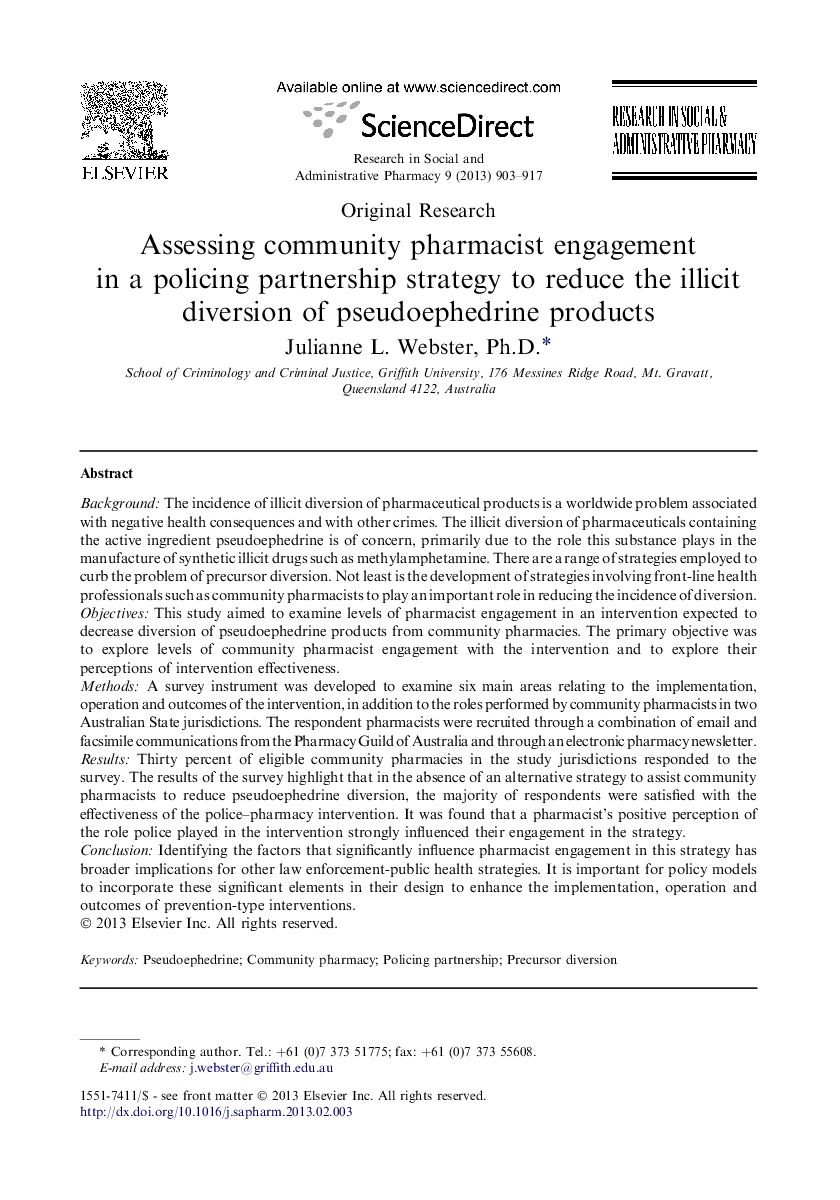| Article ID | Journal | Published Year | Pages | File Type |
|---|---|---|---|---|
| 2508537 | Research in Social and Administrative Pharmacy | 2013 | 15 Pages |
BackgroundThe incidence of illicit diversion of pharmaceutical products is a worldwide problem associated with negative health consequences and with other crimes. The illicit diversion of pharmaceuticals containing the active ingredient pseudoephedrine is of concern, primarily due to the role this substance plays in the manufacture of synthetic illicit drugs such as methylamphetamine. There are a range of strategies employed to curb the problem of precursor diversion. Not least is the development of strategies involving front-line health professionals such as community pharmacists to play an important role in reducing the incidence of diversion.ObjectivesThis study aimed to examine levels of pharmacist engagement in an intervention expected to decrease diversion of pseudoephedrine products from community pharmacies. The primary objective was to explore levels of community pharmacist engagement with the intervention and to explore their perceptions of intervention effectiveness.MethodsA survey instrument was developed to examine six main areas relating to the implementation, operation and outcomes of the intervention, in addition to the roles performed by community pharmacists in two Australian State jurisdictions. The respondent pharmacists were recruited through a combination of email and facsimile communications from the Pharmacy Guild of Australia and through an electronic pharmacy newsletter.ResultsThirty percent of eligible community pharmacies in the study jurisdictions responded to the survey. The results of the survey highlight that in the absence of an alternative strategy to assist community pharmacists to reduce pseudoephedrine diversion, the majority of respondents were satisfied with the effectiveness of the police–pharmacy intervention. It was found that a pharmacist's positive perception of the role police played in the intervention strongly influenced their engagement in the strategy.ConclusionIdentifying the factors that significantly influence pharmacist engagement in this strategy has broader implications for other law enforcement-public health strategies. It is important for policy models to incorporate these significant elements in their design to enhance the implementation, operation and outcomes of prevention-type interventions.
